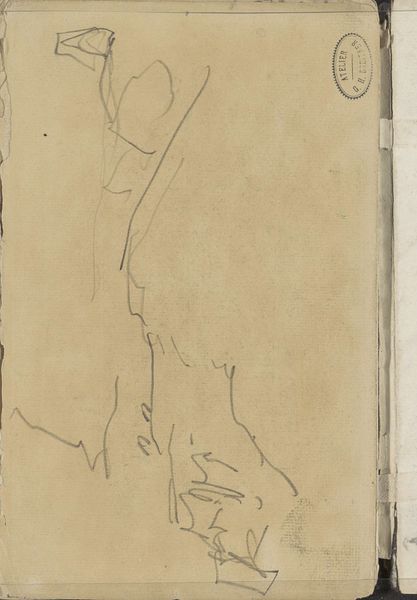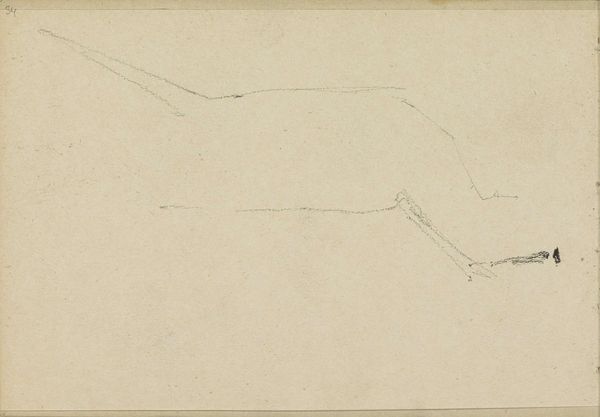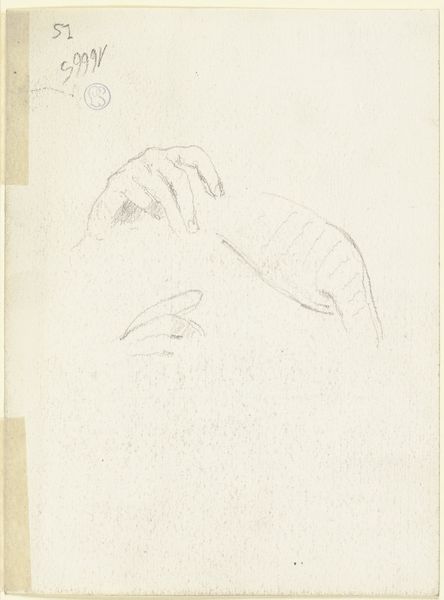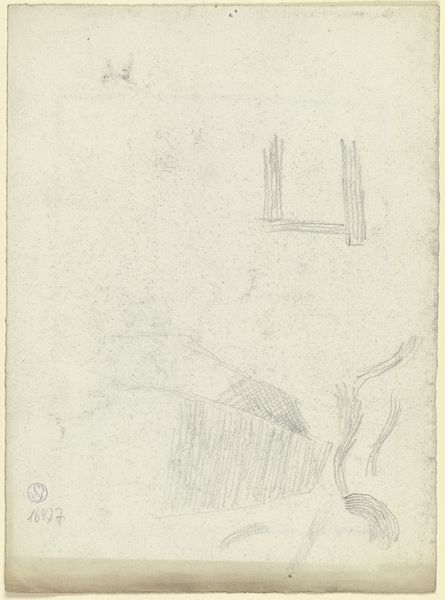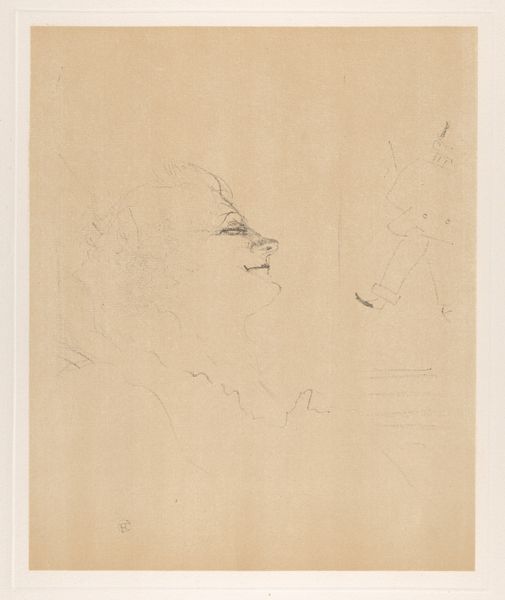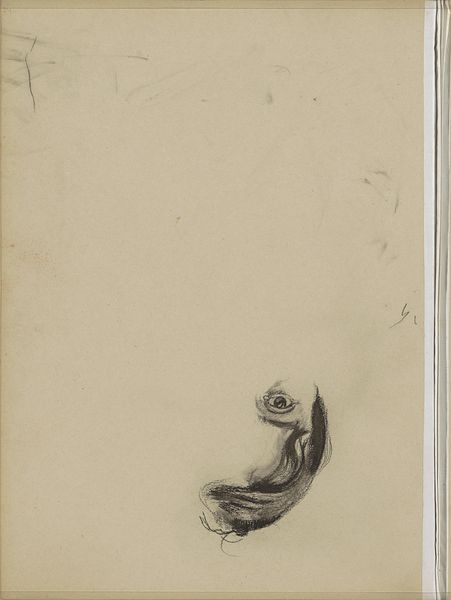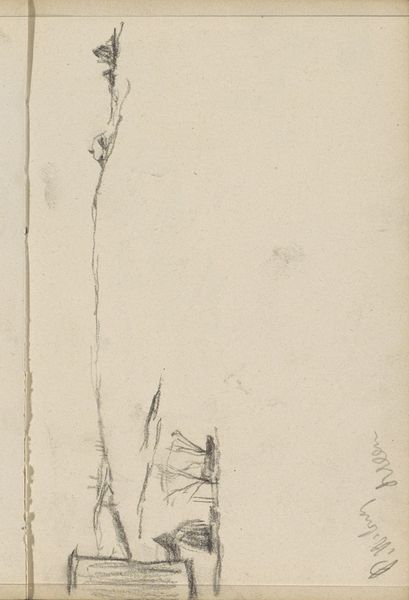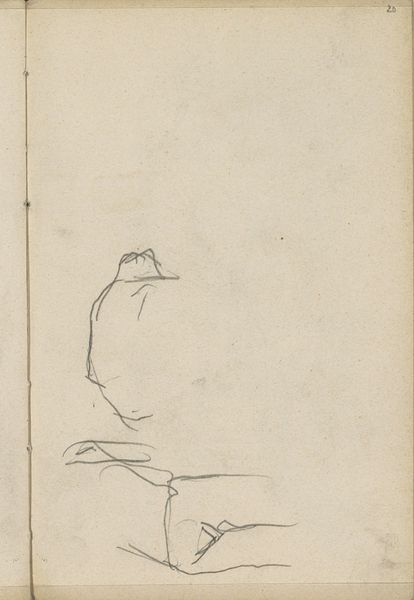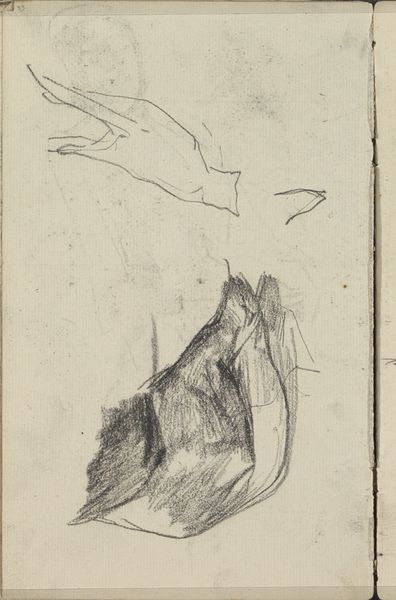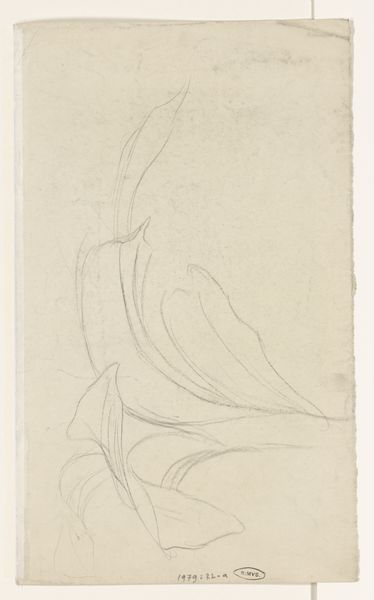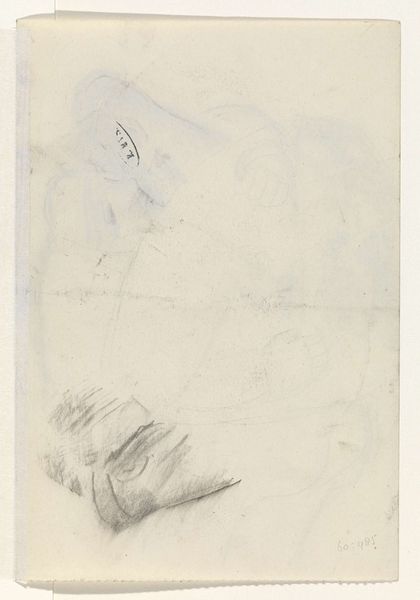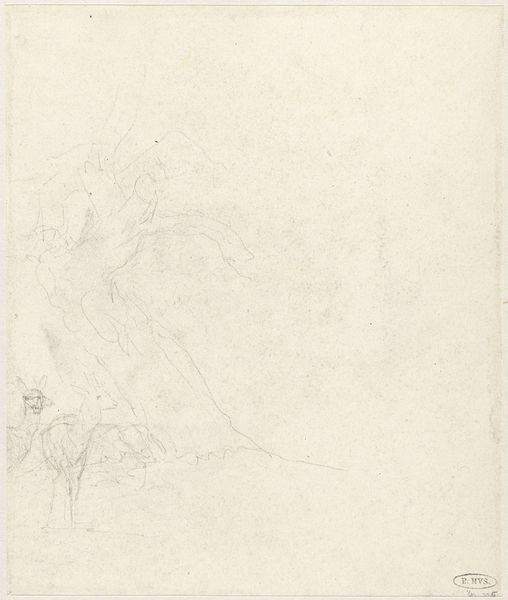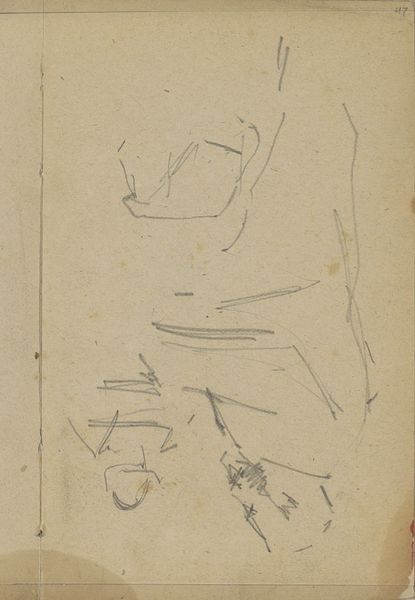
drawing, paper, pencil
#
portrait
#
drawing
#
pencil sketch
#
etching
#
paper
#
pencil
#
realism
Copyright: Rijks Museum: Open Domain
Editor: Here we have Willem Witsen's "Voet," which translates to "Foot," made between 1874 and 1923, housed here at the Rijksmuseum. It’s a pencil drawing on paper, rendered in a kind of reddish-brown hue. It's surprisingly minimal and feels unfinished. What do you make of it? Curator: Formally, its power lies in its economy. Note the negative space, the vast expanse of the paper. It amplifies the delicate linework Witsen employs to depict the foot. The limited palette further directs our focus to the artist's skill in capturing form with minimal tonal variation. Observe how line weight subtly suggests volume and dimension. Editor: It feels like just an isolated study, almost anatomical. What would it have been a study for? Curator: The 'what for' can sometimes be a distraction. Instead, consider *how* the drawing functions. The precision of the contour lines juxtaposed with the implied shading within creates a compelling tension. There's a stark simplicity that draws attention to the fundamental elements of drawing: line, form, and space. What textures do you notice? Editor: Now that you mention it, I see more varied marks. Some areas are quite scratchy, whereas the heel is much softer with blending...So you're suggesting its artistic value comes not from any hidden narrative, but rather from the formal qualities? Curator: Precisely. We see Witsen engaging with the very essence of representation, stripping away extraneous detail to reveal the underlying structure. And as such we should value that approach. Editor: I’m starting to appreciate the artist's restraint, focusing instead on the building blocks of art. I see now that looking closer reveals complexity I initially missed. Curator: Exactly! A potent reminder to slow down and examine before we assume.
Comments
No comments
Be the first to comment and join the conversation on the ultimate creative platform.

